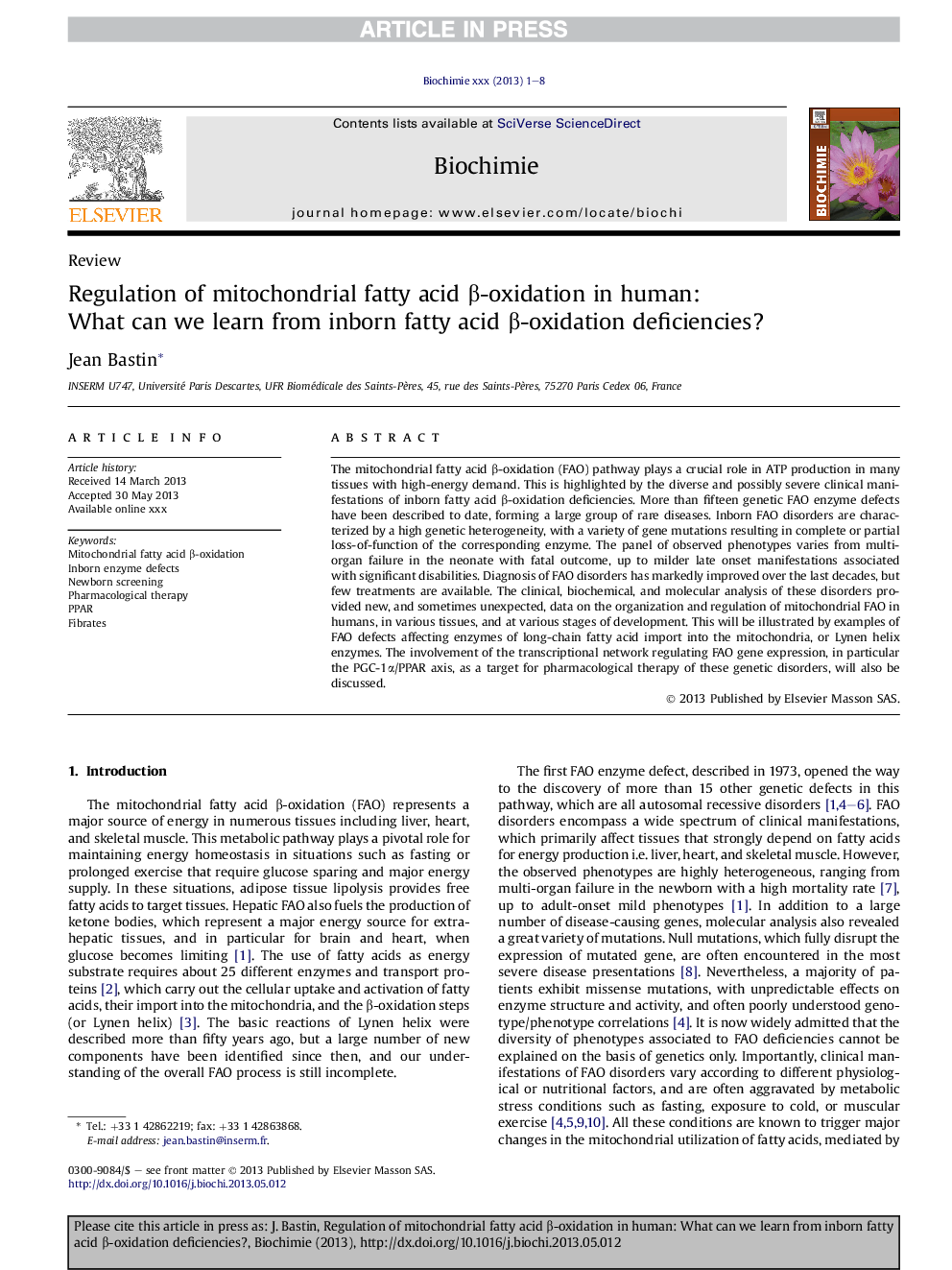| Article ID | Journal | Published Year | Pages | File Type |
|---|---|---|---|---|
| 8305967 | Biochimie | 2014 | 8 Pages |
Abstract
The mitochondrial fatty acid β-oxidation (FAO) pathway plays a crucial role in ATP production in many tissues with high-energy demand. This is highlighted by the diverse and possibly severe clinical manifestations of inborn fatty acid β-oxidation deficiencies. More than fifteen genetic FAO enzyme defects have been described to date, forming a large group of rare diseases. Inborn FAO disorders are characterized by a high genetic heterogeneity, with a variety of gene mutations resulting in complete or partial loss-of-function of the corresponding enzyme. The panel of observed phenotypes varies from multi-organ failure in the neonate with fatal outcome, up to milder late onset manifestations associated with significant disabilities. Diagnosis of FAO disorders has markedly improved over the last decades, but few treatments are available. The clinical, biochemical, and molecular analysis of these disorders provided new, and sometimes unexpected, data on the organization and regulation of mitochondrial FAO in humans, in various tissues, and at various stages of development. This will be illustrated by examples of FAO defects affecting enzymes of long-chain fatty acid import into the mitochondria, or Lynen helix enzymes. The involvement of the transcriptional network regulating FAO gene expression, in particular the PGC-1α/PPAR axis, as a target for pharmacological therapy of these genetic disorders, will also be discussed.
Related Topics
Life Sciences
Biochemistry, Genetics and Molecular Biology
Biochemistry
Authors
Jean Bastin,
